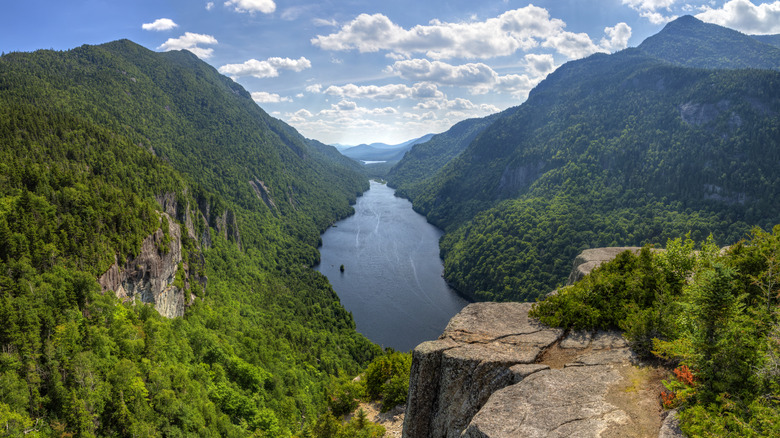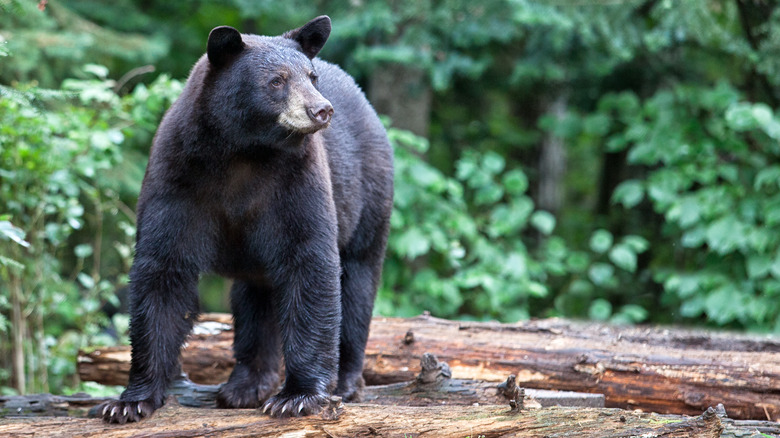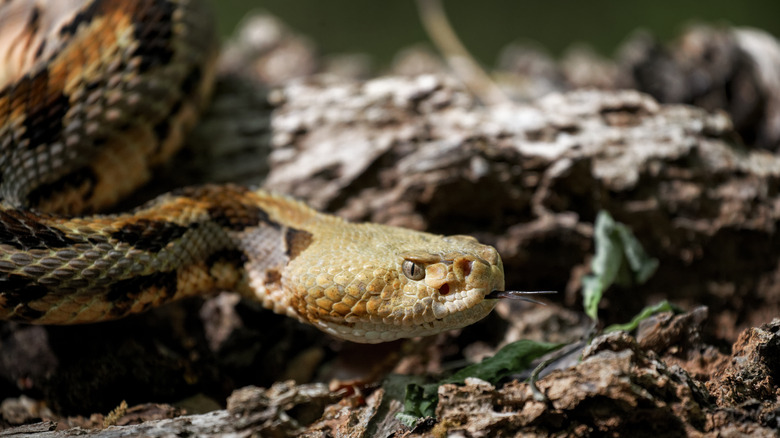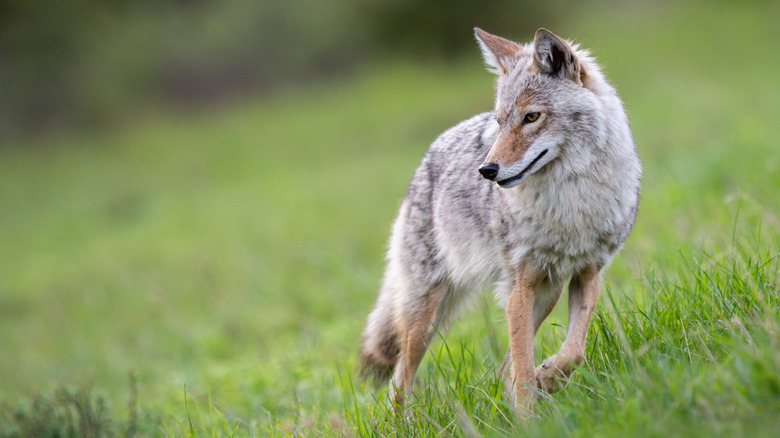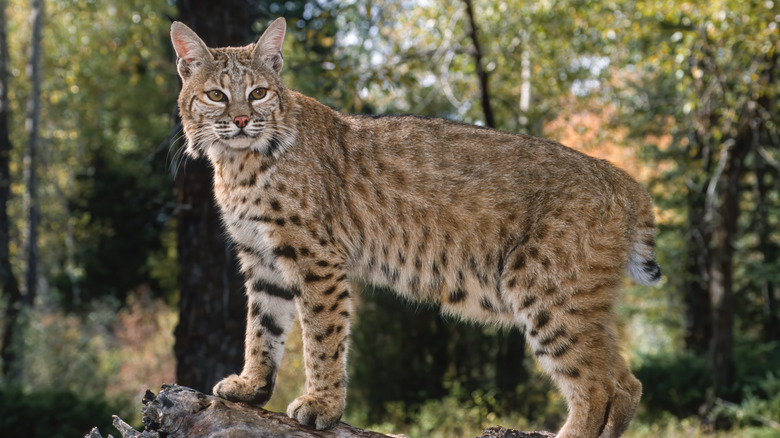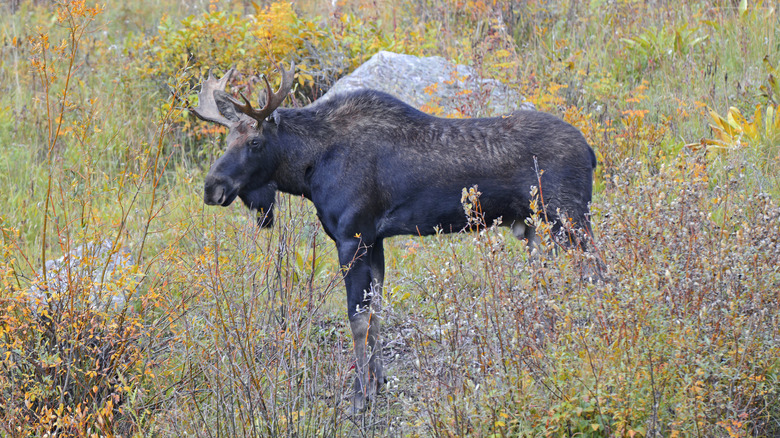5 Creatures To Beware Of When Adventuring In The Adirondacks
Located in the northeastern portion of New York state, the Adirondack Mountains have long been a popular destination for outdoor recreation. In fact, the state of New York designated the vast majority of the area as a park way back in 1892. Today, the 6 million-acre Adirondack Park is a National Historic Landmark and stakes claim to being the largest protected wilderness area in the United States and draws nearly 10 million visitors annually. Those spending time in the Adirondacks are treated to a seemingly infinite array of outdoor adventures, including camping, swimming, hiking, fishing, boating, canoeing, hunting, mountaineering, snow skiing, rock climbing, and more.
The Adirondacks are overall considered a safe area for outdoor adventure. They certainly are not among the most dangerous campsites in the U.S. However, as with any moment you are spending time outdoors, there are some risks that come with exploring this area, including a handful of creatures to beware of when adventuring in the Adirondack Mountains.
Black bears can be bad news
Not only are black bears found in the Adirondack Mountains, they are present in substantial numbers according to the State University of New York's College of Environmental Science and Forestry. In fact, it is estimated more than half the black bears living in the state of New York call Adirondack Park home. Although black bears may be more gentle than the infamous grizzlies, they are still considered one of the most dangerous types of bears on the planet. Black bears, like most wild animals, tend to shy away from human contact, but given the large bear population and the enormous amount of visitors, it is inevitable that some Adirondack adventurers will have bear encounters.
With that in mind, anyone looking to spend time in the Adirondack Mountains should be aware of this risk and familiarize themselves on how to avoid a run in with a bear and what to do if attacked by a bear. In general, standard bear precautions apply when adventuring in the Adirondacks – be alert and aware of surroundings, make noise when moving as to alert bears to your presence, don't keep food in your tent, and keep your dog on a leash. If you do encounter a black bear, don't run! Instead, make noise and try to scare it off while slowly moving away. If a black bear does attack, don't play dead — fight back.
The timber rattler is deadly venomous
Close to a dozen snakes are native to the Adirondack Mountains. Luckily for adventurers in the Adirondack Park, only one of these is venomous — the timber rattlesnake — and its range is limited to the southern portion of the park. The bad news? Timber rattlers are very venomous and dangerous. In fact, rattlesnakes are considered one of the most dangerous types of snakes in the world. However, although they pack enough venom to kill a grown human, timber rattlers are considered a bit more mellow than other varieties of rattlesnakes and rarely bite people. Typically, they only strike when they feel threatened and, even then, usually give a warning rattle before lashing out.
If you do plan to spend time in the Adirondacks, it is important to know what to do if you encounter a rattlesnake. The best ways to avoid such a confrontation is to be aware of your surroundings as you hike or climb. Be sure to watch where you step and put your hands, as snakes often are found lying besides rocks or fallen logs or lazing in rocky crevices. If you are bitten by a timber rattler, seek medical attention immediately.
Coyotes can be cause for concern
Coyotes are essentially the same size and shape as a German shepherd. However, they are not domesticated dogs — they are wild animals and should be treated as such. Throughout the 1900s and 2000s, coyotes have been expanding their range. As the population of wolves declined in some areas, coyotes filled the void. One of those regions was the Adirondack Mountains, where coyotes are commonly found today.
Coyotes are naturally skittish and normally try to avoid interactions with humans. So, typically, if they are encountered, they can easily be frightened away by what is known as coyote hazing -– making noise, throwing rocks, etc. However, when camping it is still a wise idea to take steps to protect your campsite from coyotes.
Although they usually flee when they encounter humans, there are a few conditions which can result in coyotes acting aggressively towards people. This primarily happens when a coyote is protecting its den, pups, or food source. Abnormal coyote behavior such as not running away when hazed, growling, snarling, or barking should be a sign that it is time to put a safe distance between you and the animal. In this situation, continuing making noise and throwing objects in the direction of the coyote while maintaining eye contact and moving slowly away. Report any odd-acting coyotes to wildlife authorities.
Bobcats can become aggressive if they feel threatened
Bobcats are another animal commonly found in the Adirondacks that resemble common household pets, although they are about double the size of the average housecat. Because they are solitary hunters, stealthy, and typically try to avoid humans, they aren't often seen by visitors to Adirondack Park even though they are there in good numbers.
Although they are of decent size –- up to 30 pounds –- and considered proficient hunters, bobcats aren't typically seen as posing a threat to humans. This is primarily because they prefer to avoid human interaction. However, under some circumstances, bobcats can become aggressive. This typically happens if the cat is surprised or feels threatened or as if it is in danger. With that in mind, when hiking in areas bobcats are known to be found, be sure to make noise to alert them to your presence. If you do encounter a bobcat, keep a safe distance, make noise to try and scare it off, and move away while maintaining eye contact.
Moose may charge if provoked
The Adirondack Mountains are part of the moose's natural range. However, due to a variety of factors, moose were extirpated from the region by the early 1900s. These massive mammals weren't seen again in the Adirondacks until the 1980s. The moose population has been steadily growing ever since. Today, the possibility of a moose sighting is one of the main reasons many people visit the Adirondacks.
Without a doubt, anyone who appreciates the outdoors would consider seeing a 1,200-pound moose awe-inspiring. Most often, these sightings are also without risk – especially if at a distance. However, moose can pose a potential danger. The best way to ensure safety during a moose encounter is to maintain distance. Never try to pet or feed a moose or get closer for a photo. Pay attention to the moose's behavior. If it starts to look agitated or nervous, give it more space. If a moose does charge, try to make it to your vehicle, cabin, house, or other sturdy, safe place. At the very least, try to hide behind a tree or other solid object. If the moose knocks you down during a charge, curl into a fetal position and shield your head with your arms until the moose moves away.
